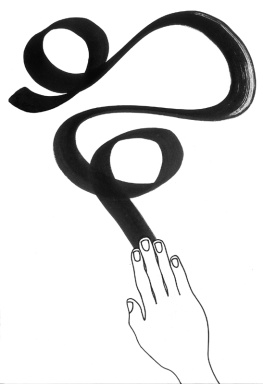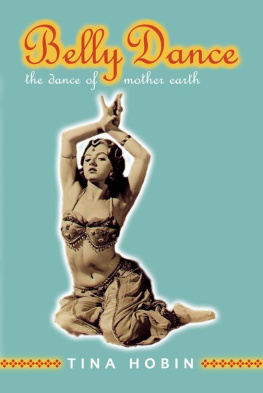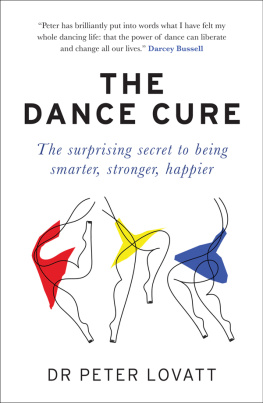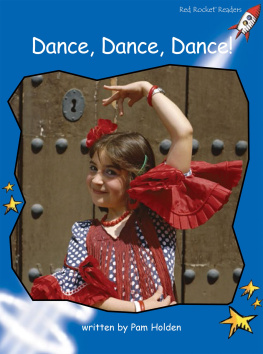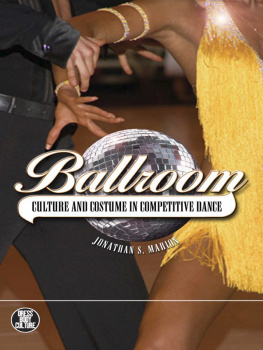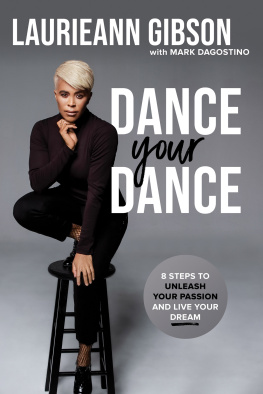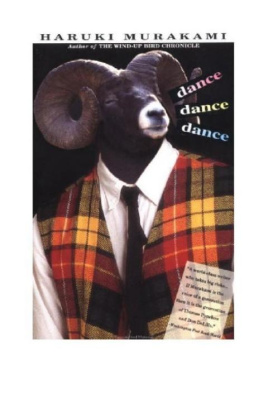The Dance Claimed Me
The Dance Claimed Me
The Dance Claimed Me
A Biography of Pearl Primus
Peggy and Murray Schwartz

This publication was supported, in part, by funds from the Book Publication
Subvention Program of the University of Massachusetts Amherst.
Copyright 2011 by Yale University.
All rights reserved. This book may not be reproduced, in whole or in part,
including illustrations, in any form (beyond that copying permitted by Sections 107
and 108 of the U.S. Copyright Law and except by reviewers for the public press),
without written permission from the publishers.
Yale University Press books may be purchased in quantity for educational,
business, or promotional use. For information, please e-mail sales.press@yale.edu
(U.S. office) or sales@yaleup.co.uk (U.K. office).
On Leaping and Shouting, by Langston Hughes, July 3, 1943.
Courtesy of the Chicago Defender.
Dreams, from The Collected Poems of Langston Hughes, by Langston Hughes,
edited by Arnold Rampersad with David Roessel, Associate Editor, copyright 1994
by the Estate of Langston Hughes. Used by permission of Alfred A. Knopf,
a division of Random House, Inc.
Dunbar, Paul Laurence. Edited by Joanne M. Braxton. The Collected Poetry of
Paul Laurence Dunbar, page 71. 1993 by the Rector and Visitors of the
University of Virginia. Reprinted by permission of the University of Virginia Press.
Designed by Mary Valencia.
Set in Monotype Bulmer type by Duke & Company, Devon, Pennsylvania.
Printed in the United States of America.
Library of Congress Cataloging-in-Publication Data
Schwartz, Peggy.
The dance claimed me : a biography of Pearl Primus / Peggy and Murray Schwartz.
p. cm.
Includes bibliographical references and index.
ISBN 9780-300155341 (hardback)
1. Primus, Pearl. 2. DancersUnited StatesBiography. 3. African American dancersBiography.
4. ChoreographersUnited StatesBiography. 5. African American danceHistory. I. Schwartz,
Murray. II. Title.
GV1785.P73S38 2011
792.8028092dc22
[B]
2010049533
A catalogue record for this book is available from the British Library.
This paper meets the requirements of ANSI/NISO Z39.481992 (Permanence of Paper).
10 9 8 7 6 5 4 3 2 1
For
Celia Renner Topf
and
Lena Baruch Schwartz
With Pearl, among the ancestors
The quest to discover anothers psyche, to absorb anothers motives as deeply as your own is a lovers quest. But the search for facts, for places, names, influential events, important conversations and correspondences, political circumstancesall this amount to nothing if you cant find the assumption your subject lives by.
Ann Michaels, Fugitive Pieces
My career has been a quest... a search for roots. The journey has taken me deep into the cultures of many people in many countries of the world.
Dance has been my vehicle. Dance has been my language, my strength. In the dance I have confided my most secret thoughts and shared the inner music of all mankind. I have danced across mountains and deserts, ancient rivers and oceans and slipped through the boundaries of time and space.
Dance has been my freedom and my world. It has enabled me to go around, scale, bore through, batter down or ignore visible and invisible social and economic walls.
Dance is my medicine. It is the scream which eases for awhile the terrible frustration common to all human beings who, because of race, creed or color, are invisible. Dance is the fist with which I fight the sickening ignorance of prejudice. It is the veiled contempt I feel for those who patronize with false smiles, handouts, empty promises, insincere compliments. Instead of growing twisted like a gnarled tree inside myself, I am able to dance out my anger and my tears.
Dance has been my teacher, ever patiently revealing to me the dignity, beauty and strength in the cultural heritage of my people as a vital part of the great heritage of all mankind.
I dance not to entertain but to help people better understand each other. Because through dance I have experienced the wordless joy of freedom. I seek it more fully now for my people and for all people everywhere.
Pearl Primus, 1968
Contents
Introduction
OPEN ANY MAJOR BOOK of twentieth-century American dance history and you will encounter the name Pearl Primus and, most likely, an exuberant image of a powerful, leaping body. The recipient of the National Medal of the Arts, Pearl was a dancer, anthropologist, and educator who had a significant impact on American arts and culture in the twentieth century. She danced to protest the conditions of African Americans, brought the ancient dances of Africa to America, and, controversially, carried her knowledge of dance, music, theater, anthropology, and education to Africa itself. Yet the full story of her creative life and teaching, which spanned decades, continents, and many cultures, has not been told.
In some ways Primus career seems enigmatic, wrote dance historian John Perpener. At the height of her concert appearances, she was considered one of the most exciting dancers of her time. Her dynamism, dramatic flair, and kinetic magnetism were incomparable. Yet she did not create a continuing school or style, and her journey was as much a process of self-definition as it was a quest for cultural retrieval. Her uniqueness is elusive because Pearl Primus lived and worked among several worlds, each only partially known to the others.
Sketched in barest of outlines, indicating her meteoric career in dance, with emphasis on her early years, existing accounts only gesture toward her personal struggles and the scope of her contributions to the arts and education. A shining light in the field of dance, this stocky, strong, beautiful, and dark-skinned woman also came to represent the pride of black America and the dignity of Africa for audiences throughout the Western world. Her transformation absorbed the dance and went beyond it as the African spirit became a part of Pearl, stated dance historian Joe Nash, one of Pearls life-long friends. Judith Jamison, herself a powerful force in American dance, said of Pearls place in the dance pantheon:
She was a queen on stage, absolutely a different looking kind of queen. She created a niche for anyone following her that looked like she looked, that danced like she danced... that lectured the way she lectured, that did anthropology the way she did. She opened a window that had been shut, and that puts her in a spotlight of dance history... because she was looking at it from another perspective. And, she was a brilliant dancer. My God, she was so beautiful.
How Pearl Primus went beyond to create another perspective is the subject of this biography.
Pearl Primus blazed onto the dance scene in New York in 1943 with stunning dances of social commentary and protest. Born in Trinidad in 1919 and raised in the United States, she had initially aspired to be a physician but was turned away from laboratory jobs because of her race. She found dance work in a National Youth Administration project, and, as she put it, the dance claimed me.
Pearls immigrant, working class family was part of the first large wave of New Yorkbound West Indians that peaked in the 1920s. She grew up in New York but found her spiritual roots, her ancestral home, on a trip to Africa in 194849, supported by the last and largest fellowship awarded by the Julius Rosenwald Foundation. Before her trip, she wrote prophetically, I shall go into the land of my forefathers. My heart will be filled with the music and drums and my soul will dance with the people. From then on, Africa formed the core of her identity.
Next page

